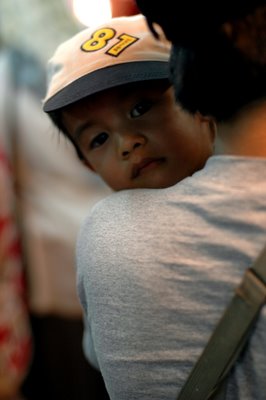 These pictures were taken during my Loire Valley cycling tour in 2002 using my conventional NIKON F601M SLR. My favorite chateau, I went again to Chenonceau in 2004 before touring Brittany for one week on my bike.
These pictures were taken during my Loire Valley cycling tour in 2002 using my conventional NIKON F601M SLR. My favorite chateau, I went again to Chenonceau in 2004 before touring Brittany for one week on my bike. 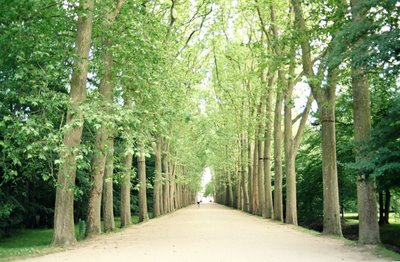 The entrance to the chateau was about 1km long. Beautiful! I could imagine a convoy of wagons past thourgh it during the chateau glorious days.
The entrance to the chateau was about 1km long. Beautiful! I could imagine a convoy of wagons past thourgh it during the chateau glorious days.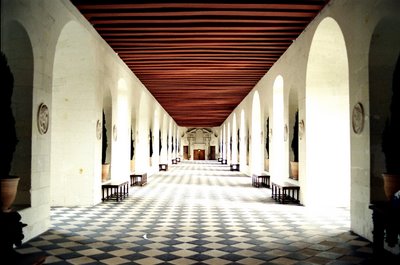 I was lucky to be in this beautiful hall right before closing when everybody has deserted the area. Still remember a couple were still lingering about for a while before the hall was empty. Can't blame them, this chateau is very very romantic.In fact it is also know as the "grande dame" of Loire Valley chateauxExcerpts from Wikipedia
I was lucky to be in this beautiful hall right before closing when everybody has deserted the area. Still remember a couple were still lingering about for a while before the hall was empty. Can't blame them, this chateau is very very romantic.In fact it is also know as the "grande dame" of Loire Valley chateauxExcerpts from WikipediaThe Chateau Chenonceau, near the small village of Chenonceau, in the Indre-et-Loire département of the Loire Valley in France, was built on the site of an old mill on the River Cher.
The chateau was seized by King François I for unpaid debts to the Crown, and after François' death, King Henri II offered the chateau as a gift to his mistress, Diane de Poitiers who became fervently attached to the chateau and its view along the river. She would have the arched bridge constructed, joining the chateau to its opposite bank. She then oversaw the planting of extensive flower and vegetable gardens along with a variety of fruit trees. Set along the banks of the river, but buttressed from flooding by stone terraces, the exquisite gardens were laid out in four triangles.
After King Henri died, his widow, the strong-willed Catherine de Medici, had Diane de Poitiers removed to the Chateau Chaumont. Queen Catherine made it her own favorite residence, adding a series of gardens as well. As Regent of France, Catherine would spend a fortune on the chateau and on spectacular nighttime parties. In 1560, the first ever fireworks display seen in France took place during the celebrations marking the ascension to the throne of Catherine's son François II.
On Catherine's death the chateau went to her daughter-in-law, Louise de Lorraine, wife of King Henri III. At Chenonceau Louise was told of her husband's assassination and she fell into a state of depression, spending the remainder of her days wandering aimlessly along the chateau's vast corridors dressed in mourning clothes amidst somber black tapestries stitched with skull and crossbones.
Another mistress took over in 1624, when Gabrielle d'Estrée, the favourite of King Henri IV, inhabited the castle. After that, Chenonceau was abandoned to a forlorn darkness for more than a hundred years until a wealthy noble bought it in 1732.
George Sand's grandmother, Madame Dupin, saved it from destruction during the French Revolution. She was able to preserve it from being destroyed by the Revolutionary Guard because it was essential to travel and commerce being the only bridge across the river for many miles.
In 1864, Daniel Wilson, a Scotsman who had made a fortune installing gaslights throughout Paris, bought the chateau for his daughter. In the tradition of Catherine de Medici, she would spend a fortune on elaborate parties to such an extent that her finances were depleted and the chateau was seized and sold to an American.
In 1913, the Menier family, famous for their chocolates, bought the chateau and still own it to this day.
During World War I the gallery was used as a hospital ward; during the Second War it was a means of escaping from the Nazi occupied Vichy zone on one side of the River Cher to the free zone on the opposite bank.
An archictectural mixture of late Gothic and early Renaissance, Chateau Chenonceau and its gardens are open to the public. Other than the Royal Palace of Versailles, Chenonceau is the most visited chateau in France.
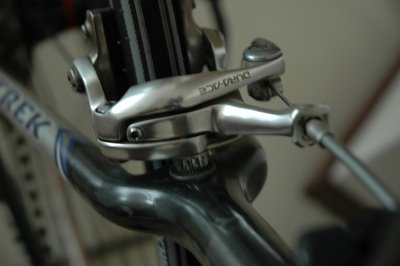
 It was just brilliant! Very refreshing!
It was just brilliant! Very refreshing! 2 possibilities. Perhaps my friends wanted me to taste the glory of reaching the top first, or I was riding with 2kg less of my body weight which was shed in Ramadhan. What ever the reason may be, I am very happy and it was a great ride.
2 possibilities. Perhaps my friends wanted me to taste the glory of reaching the top first, or I was riding with 2kg less of my body weight which was shed in Ramadhan. What ever the reason may be, I am very happy and it was a great ride.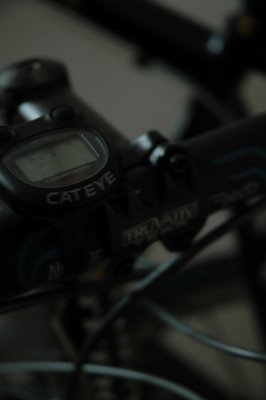 It was very refreshing to meet up with my riding buddies again after one month. We wished Selamat Hari Raya to each other. This is the kind of healthy camaraderie I really appreciate and enjoy.
It was very refreshing to meet up with my riding buddies again after one month. We wished Selamat Hari Raya to each other. This is the kind of healthy camaraderie I really appreciate and enjoy. A friend expressed his concerned about the youth back in his kampong with drug addiction and AIDS. He was disappointed to find out one of the oldest golf clubs in the country have been developed into some big property development project.
A friend expressed his concerned about the youth back in his kampong with drug addiction and AIDS. He was disappointed to find out one of the oldest golf clubs in the country have been developed into some big property development project. I wonder what will be the identity of future Malaysia generations….
I wonder what will be the identity of future Malaysia generations….





















 *right after sunset, at a lookout point on the edge of Ampang, on the way to Ulu Langat.
*right after sunset, at a lookout point on the edge of Ampang, on the way to Ulu Langat.